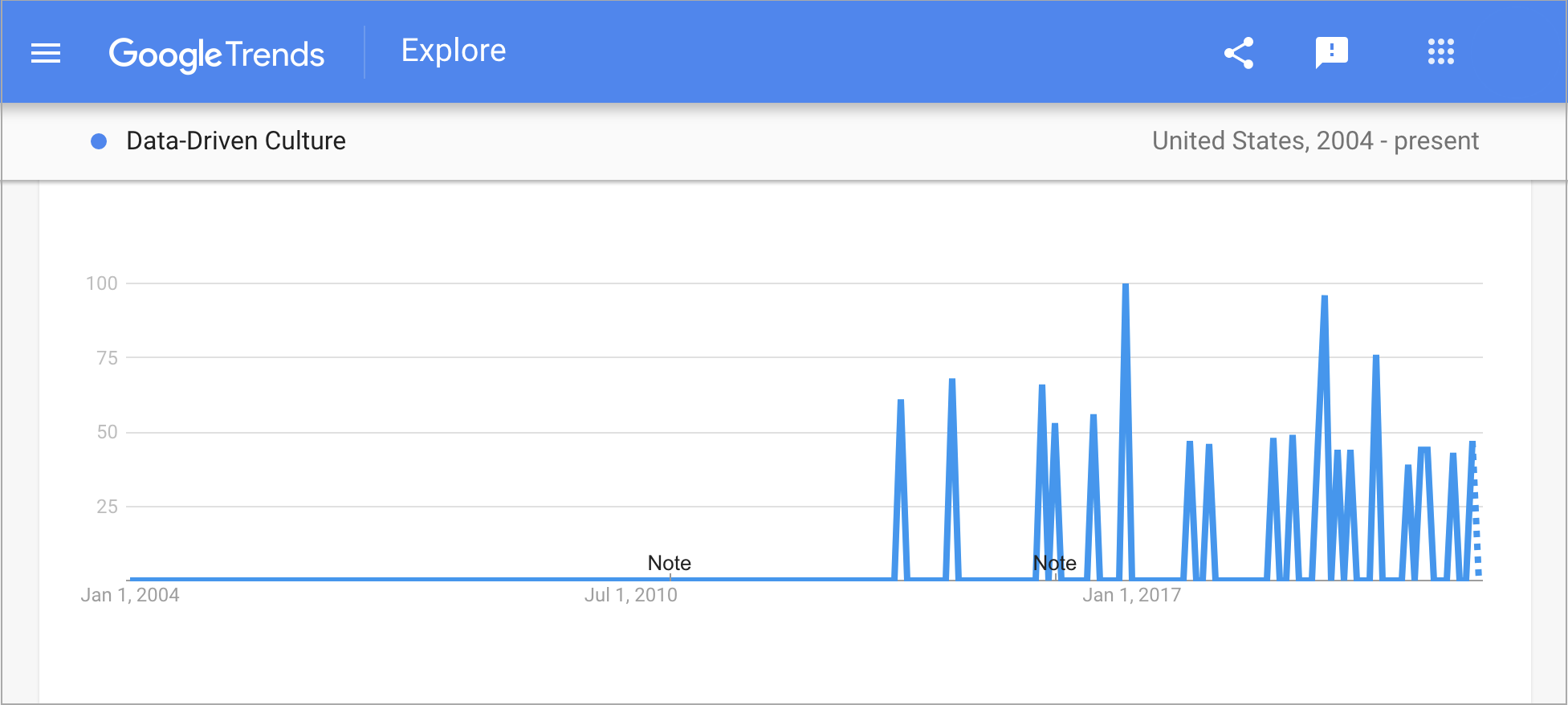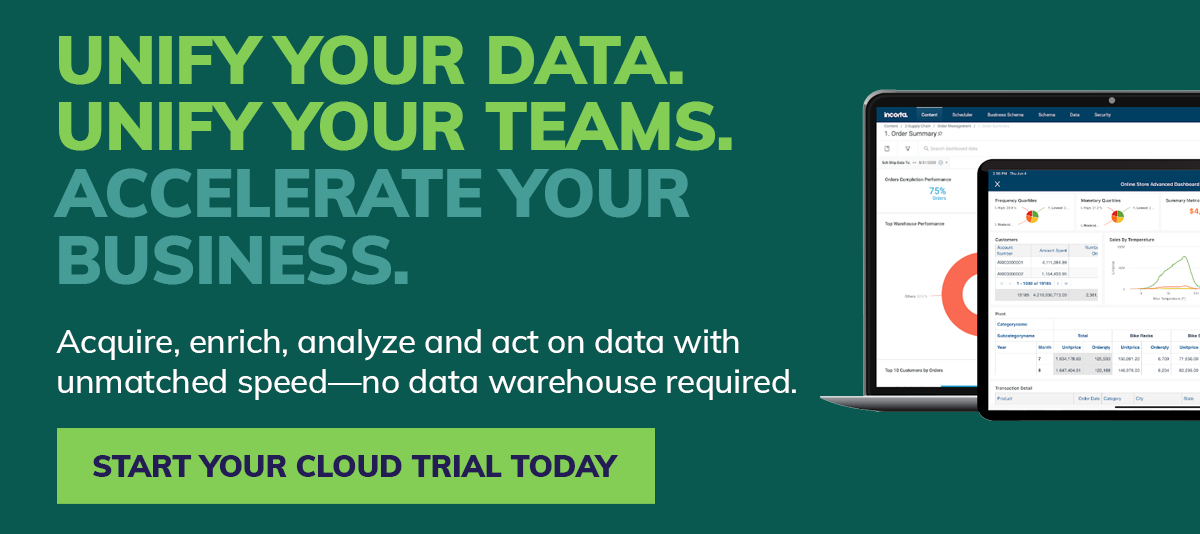
In the past several years, it seems like the quest for organizations to create a data driven culture has intensified.
It makes sense. Organizations have so much data, and there’s a growing recognition that it can be a very valuable asset. There is no shortage of tools for analyzing it for insights. But, these tools have limited utility when only a small subset of people can use them. There’s growing awareness that everyone in the company needs to be engaged with data and analytics – not just data and IT professionals.

How can organizations accomplish that? Every world-class data driven culture I’ve ever seen comes from the top down. What I notice about these companies is that they are more nimble. People have direct access to data, and they use it to make timely decisions. They still might have to make some gut calls, but they’re making them based upon the data.
I’ve also noticed that these companies have a culture of continuous learning – people are motivated to get certified on different analytics tools. I see elements of gamification and/or friendly competition around using data, such as hackathons for solving thorny business problems. Recognition is given for feats of data analysis that lead to new ideas. People see working with data as a means to advance the company – and their own careers.
Creating Excitement to Explore
What drives this kind of culture is leaders not just saying, “Hey, here’s some data and some tools; go do this analysis.” When you do that, people can execute without really understanding why.
Good data leaders model what a data driven culture looks like. Instead of looking at reports and dashboards as passive consumers, they engage in conversations: “Where did that data come from? How did you do that analysis? Walk me through your thinking.”
They share their own thought processes, and the data and analysis they use in their own decision making. They showcase the value that data is bringing to the business.
They take time to explain, and to show others the path. They explain what the business goal is; they suggest some of the questions that need to answers, and point people in the direction of where that data might be. Those approaches create fellowship, empowerment, and excitement around data exploration.
Cultivating a Data Mindset
This is something I try to do with my own team. We were recently meeting some business leaders, trying to figure out the impact of customer usage and technical sales activity on downstream revenues. I suggested combining product telemetry data and revenue data. We talked through what types of analysis they might consider. The lightbulbs came on and they were off to the races.

Being this type of leader is less about data skills – you don’t have to write Python or SQL, or build data pipelines – and more about mindset. It’s being open to new ways of thinking and of doing things.
What really got me in that mindset was learning about how Jeff Bezos approached decision making in the early days of Amazon. He categorized decisions as either type one or type two. A “type-one” decision would be one that would have a large impact, and be potentially catastrophic if you got it wrong. That type of decision requires the utmost strategic planning and painstaking analysis.
A “type-two” decision is one that you could recover from if you got it wrong. Since the risk is lower, you don’t need perfect analysis. Type-two decisions are the perfect opportunity for leaders and teams to build their data chops. Fear of failure is often what holds people back, so experiment in those areas where failure is not catastrophic. Don’t worry too much whether you have perfect data.
Finding the Nuggets of Truth
Let’s say you’re seeing an interesting trend in free trials, but it’s happening in less than 10% of them. There’s still some truth in the data. You can look at the clustering, and drill down into the outliers. There’s something you can learn, even
if it’s just that you need more and better data in certain areas. If you take action on that learning, it’s another step toward developing that data driven culture.
Data is one of the single greatest assets that we have at our fingertips to take the pulse of the business. It’s how we gain insights that can help us drive revenue, cut costs or achieve our KPIs or OKRs. These insights can come from anyone. In that regard, the drive to create a data-driven culture is diametrically opposed to the command-and-control management style of old.
It’s not just telling the team what to do. It’s painting the vision for them of what great looks like, and showing them the way to get there. If you remove the fear of failure, that’s where really great things happen. I would challenge leaders to dive in and be very, very curious. And if there’s something that you don’t know or maybe it’s not in your wheelhouse, just try it.
